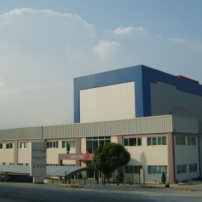Open ocean operation has no significant environmental impact: no difference in water quality between upcurrent and downcurrent of the net pens
Neil Anthony Sims, President, Ocean Stewards Institute and President/CEO, Kona Blue Water Farms, Inc. Testimony for House Subcommittee on Insular Affairs, Oceans and Wildlife Oversight Hearing on Offshore Aquaculture. September 9, 2009, 10:00 a.m.
Summary of testimony
Thank you for the opportunity to testify today.
I am trained as a marine biologist, and have worked throughout the Pacific. Very early in my career, it became clear to me that we needed to change the way that we worked with the ocean. We need to stop thinking of marine creatures solely as extractive resources. We need to move towards a culture of nurture – mariculture - growing more of our seafood in the ocean.
I speak here as the President of the Ocean Stewards Institute - a trade association advocating for rational, sustainable open ocean mariculture. We are the true revolutionaries of the Blue Revolution.
I am also co-Founder and CEO of Kona Blue Water Farms. Last year, we produced over 1 million lbs of our trademarked, sashimi-grade Kona Kampachi® from our offshore site in Hawaii State waters – a half mile offshore from pristine coral reef.
Yet our operation has no significant environmental impact. See the data on our web site - you cannot see any difference in water quality between upcurrent of the net pens, and downcurrent of the net pens. We feed our fish a sustainable diet that is largely vegetarian. Monterey Bay Aquarium’s Seafood Watch Program ranked our Kona Kampachi® as a “Good Alternative” …. the first time any fish grown in the ocean has ever been ranked as anything other than “Red Avoid”.
I urge you, please, to establish a framework for open ocean mariculture in Federal waters. Hawaii’s ocean leasing legislation provides a good model.
The US must lead this industry forward, with high standards for product quality and sustainability. If we do not, then rest assured, it will happen elsewhere, but without the high standards. And remember … it is all one ocean, and sooner or later, it all washes up on our shores.
Three imperatives compel us towards responsible open ocean mariculture
It is an ecological imperative: Wild stock fisheries worldwide cannot sustain any greater fishing pressure.
It is a public health priority: Americans need to eat more seafood.
And it is an issue of national responsibility: The $8 billion seafood trade deficit offends me not so much for its economic implications, but more for how we, as a nation, are exporting our ecological footprint overseas. We ask others to bear the burden of our seafood demands. America relies on imported seafood, with virtually no input into foreign farm practices, no input into environmental standards, and no input into the food safety standards or public health risks.
Where is the moral responsibility in that?
Moving ‘Beyond Salmon’
Most of the emotion that swirls around fish farming, we contend, concerns salmon. But salmon are anadromous fish, and we should here be focused here on the other 70% of the earth’s surface: mariculture is about growing marine fish in the ocean. We need to think B.S. … “Beyond Salmon”.
A better example is the 150,000 tons of seabass and sea bream produced per year, across the Mediterranean, with very little emotion, and very few objections.
An integrated National Ocean Policy
Ocean Stewards assert that an integrated National Ocean Policy must include four essential elements:
1. Extensive Marine Protected Areas (MPAs),
2. Individual Fishing Quotas (IFQs) for commercial fisheries,
3. We need to eat closer to the base of the food chain, and
4. We need responsible open ocean mariculture.
If we are going to implement these first three steps – and we must - then we also must absolutely implement the fourth. Setting up MPAs and IFQs will, by necessity, involve reductions in commercial fisheries. We will need to replace these fish, by growing our own.
And if we eat lower on the marine food chain, it’s immaterial if it is anchovies or Kona Kampachi®., or other fish that approach a 1:1 Fish-in to Fish-out ratio.
Open ocean mariculture up to 60 times more efficient use of marine resources
Critics often say that we are just “feeding fish to grow fish”. However, sustainable mariculture is 60 times more efficient use of the ocean’s limited baitfish resources.
There are three reasons for this:
1. Our fish are mostly vegetarian, so they are trophically far more efficient than purely carnivorous wild fish.
2. Our fish are harvested for optimum yield, yet wild fish must migrate long distances to spawn, must hunt for food, must avoid predation, and are then harvested at some large, inefficient size.
3. Open ocean mariculture has no by-catch, whereas wild fisheries by-catch can be as high as 11 pounds of fish thrown away - either undersize, over-quota, or unsaleable - for every one pound of fish that is retained.
If you could have 60 pounds of sustainable Kona Kampachi® or one pound of wild Chilean Seabass, which would you choose?
An invitation …
These are complex issues. Nothing helps illuminate them better than coming face-to-face with our fish, out in the deep blue of the open ocean. I therefore invite each of you, and your staff, to come to Kona, so we might host you in our hatchery, and get you in the water on our offshore farm site. You will see for yourself the blue horizon of the future …. the way that the world should see seafood.
Thank you, and aloha.
Download full testimony from link below:











